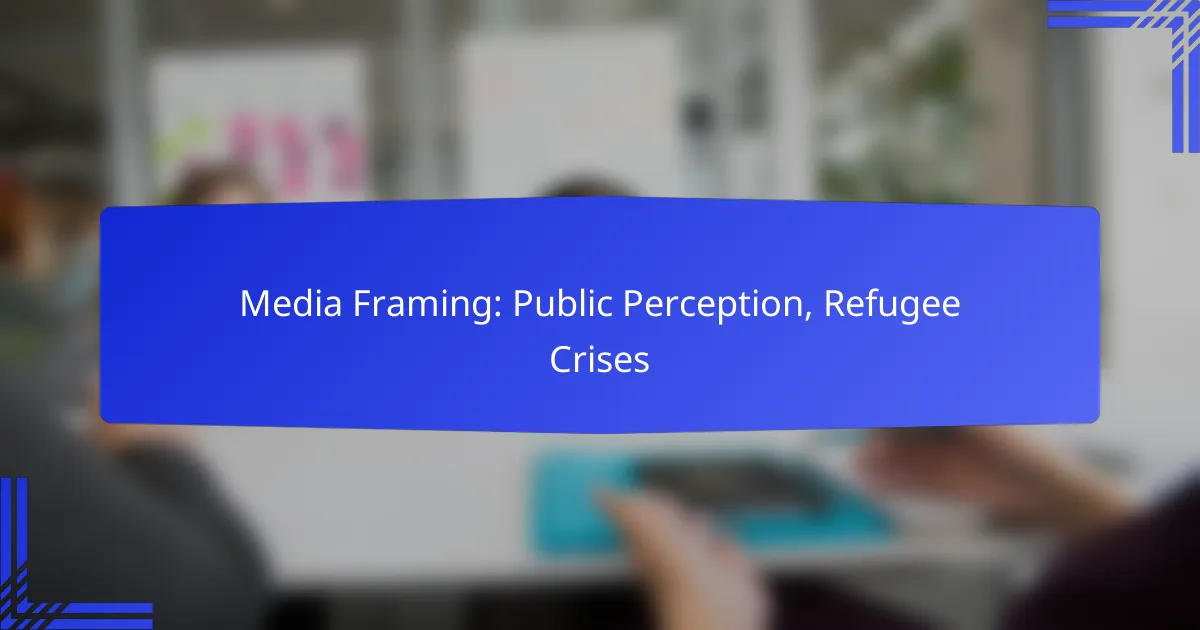Media framing plays a crucial role in shaping public perception of refugee crises by determining how narratives are constructed and which elements are highlighted. This influence can lead to varying degrees of empathy and support, ultimately affecting societal attitudes towards refugees. By employing effective media strategies that emphasize the humanity of refugees and present diverse perspectives, the media can foster a more compassionate understanding of these complex issues.
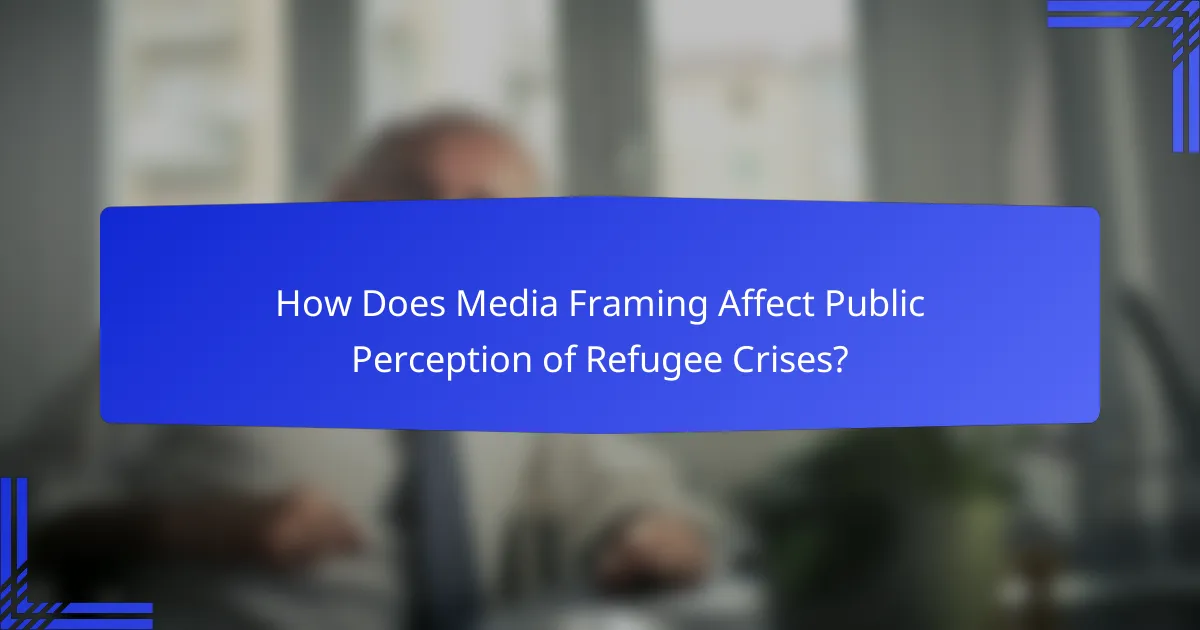
How Does Media Framing Affect Public Perception of Refugee Crises?
Media framing significantly shapes public perception of refugee crises by influencing how stories are told and which aspects are emphasized. This framing can lead to varying levels of empathy, support, and understanding among the audience, ultimately affecting societal attitudes towards refugees.
Influence on empathy and support
Media framing can enhance or diminish empathy for refugees, depending on how their stories are presented. For instance, portraying refugees as victims in dire situations can evoke compassion and a desire to help, while framing them as threats may foster fear and hostility. The emotional tone of the coverage plays a crucial role in shaping public support.
Effective storytelling that highlights individual experiences and struggles often leads to increased public support for humanitarian efforts. Conversely, depersonalized statistics or negative portrayals can result in apathy or resistance to refugee assistance initiatives.
Shaping narratives and stereotypes
The way media frames refugee stories contributes to the formation of narratives and stereotypes that can persist in public consciousness. When refugees are consistently depicted through a narrow lens—such as focusing solely on their economic impact or security concerns—this can lead to generalized beliefs that do not reflect the diversity of their experiences.
Additionally, sensationalized reporting can reinforce negative stereotypes, making it harder for refugees to integrate into society. Challenging these narratives through balanced reporting is essential for fostering a more nuanced understanding of refugee issues.
Impact on policy decisions
Media framing not only influences public opinion but can also directly impact policy decisions regarding refugee crises. Policymakers often respond to the sentiments expressed in media coverage, which can lead to changes in immigration laws, funding for refugee programs, and public services.
For example, positive media portrayals that highlight successful refugee integration can encourage governments to adopt more welcoming policies. In contrast, negative framing may lead to stricter immigration controls and reduced support for refugee programs, reflecting the prevailing public sentiment shaped by the media.

What Are Effective Media Strategies for Positive Framing?
Effective media strategies for positive framing involve techniques that highlight the humanity of refugees, provide context through data, and ensure a variety of viewpoints are represented. These approaches can significantly influence public perception and foster empathy towards refugee crises.
Highlighting personal stories
Personal stories create emotional connections and humanize the refugee experience. By sharing individual narratives, media can illustrate the challenges faced by refugees, making their plight relatable to the audience.
For instance, featuring interviews or testimonials from refugees can evoke empathy and understanding. Highlighting specific journeys, such as a family’s escape from conflict or a child’s struggle for education, can resonate deeply with viewers.
Using statistics and data
Statistics and data provide a factual basis that supports positive framing. Presenting figures about the contributions of refugees to society, such as economic impacts or community involvement, can counter negative stereotypes.
For example, showcasing that refugees often fill labor shortages or contribute to local economies can shift perceptions. Using clear visuals, like infographics, can enhance understanding and retention of this information.
Promoting diverse perspectives
Incorporating diverse perspectives ensures a more balanced portrayal of refugees. This includes voices from refugees themselves, local communities, and experts in humanitarian issues. Such representation can challenge monolithic narratives and highlight the complexity of refugee experiences.
Media outlets should strive to include stories from various demographics, such as women, children, and the elderly, as well as insights from NGOs and local governments. This approach fosters a more nuanced understanding and encourages dialogue among different stakeholders.
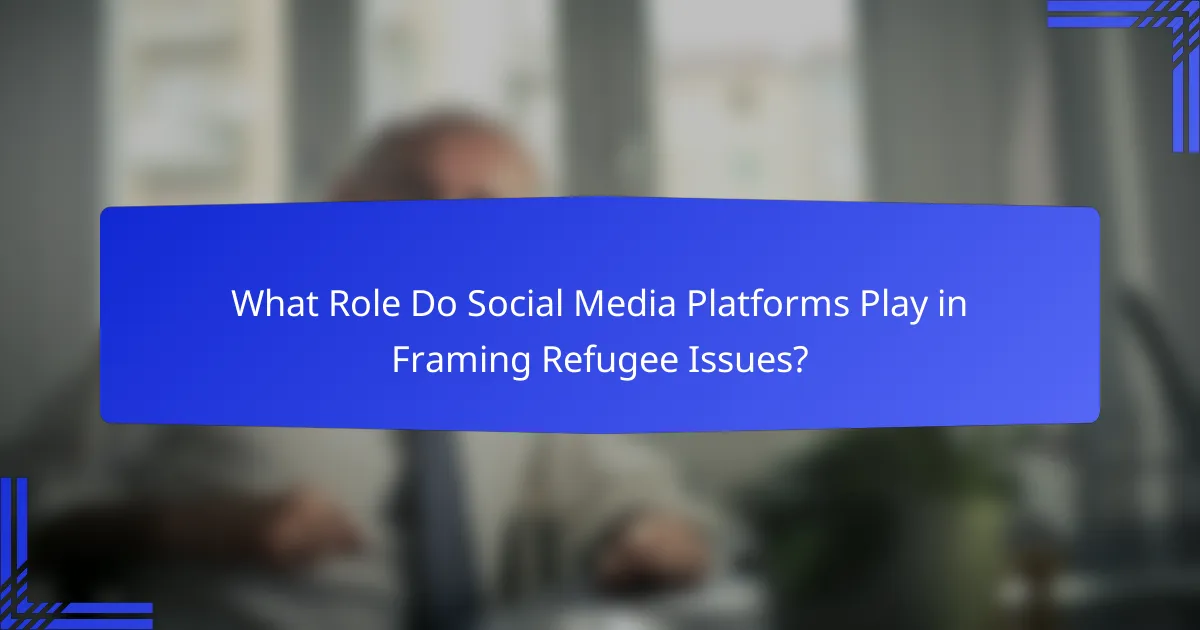
What Role Do Social Media Platforms Play in Framing Refugee Issues?
Social media platforms significantly influence how refugee issues are perceived by the public, shaping narratives through user-generated content and algorithm-driven visibility. These platforms can amplify both positive awareness and negative stereotypes, impacting public opinion and policy responses.
Viral campaigns and awareness
Viral campaigns on social media can quickly raise awareness about refugee crises, often mobilizing support and resources. Campaigns like #RefugeesWelcome have successfully highlighted the plight of refugees, encouraging donations and volunteer efforts across various countries.
These campaigns typically use compelling visuals and personal stories to engage audiences, making the issues relatable. For instance, a short video or an impactful image can lead to thousands of shares, spreading the message far beyond its initial reach.
Echo chambers and misinformation
Social media can create echo chambers where misinformation about refugees proliferates, reinforcing negative stereotypes and fears. Users often engage with content that aligns with their existing beliefs, which can skew perceptions and lead to a distorted understanding of refugee issues.
To combat misinformation, it is crucial for users to seek diverse perspectives and verify information before sharing. Fact-checking organizations and credible news sources can help provide accurate context and counteract harmful narratives.
Influencer engagement
Influencers on social media play a pivotal role in framing refugee issues by leveraging their platforms to advocate for change. Their reach can mobilize large audiences, making them effective in raising awareness and promoting charitable initiatives.
However, it is essential for influencers to approach these topics sensitively and authentically. Collaborating with refugee organizations can ensure that their messaging is accurate and respectful, helping to foster a more informed public discourse.
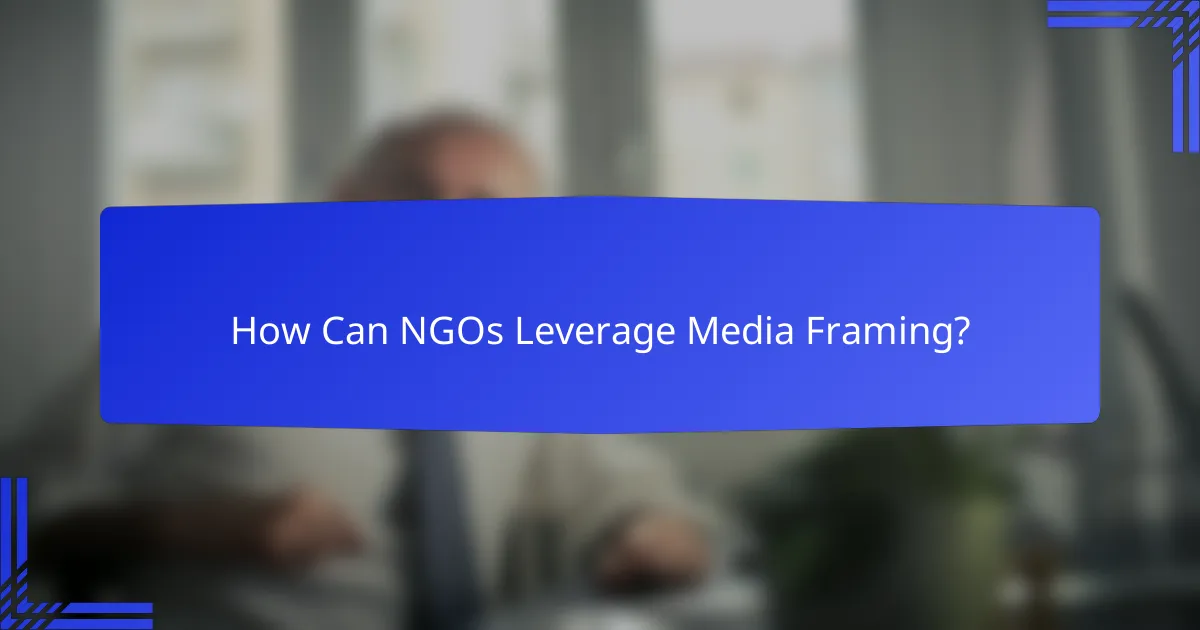
How Can NGOs Leverage Media Framing?
NGOs can effectively leverage media framing by crafting narratives that resonate with the public, collaborating with journalists to amplify their messages, and utilizing multimedia content to engage diverse audiences. These strategies can significantly influence public perception of refugee crises and drive support for humanitarian efforts.
Creating compelling narratives
Compelling narratives are essential for NGOs to frame refugee crises in a way that captures attention and empathy. By focusing on personal stories and human experiences, organizations can create a connection that statistics alone cannot achieve. Highlighting individual journeys can evoke emotional responses and foster a sense of urgency among the audience.
To create these narratives, NGOs should consider the cultural context of their target audience. Tailoring stories to reflect local values and concerns can enhance relatability and impact. For example, using local languages or references can make the message more accessible and engaging.
Collaborating with journalists
Collaboration with journalists is crucial for NGOs to ensure their narratives reach a wider audience. Establishing relationships with media professionals can help organizations gain coverage and influence the framing of stories. NGOs should provide journalists with accurate information, compelling stories, and access to affected individuals to enrich their reporting.
It is important for NGOs to understand journalists’ needs and deadlines. Offering timely insights and exclusive content can increase the likelihood of favorable media coverage. Additionally, NGOs should be prepared to respond quickly to media inquiries to maintain relevance in ongoing discussions about refugee issues.
Utilizing multimedia content
Multimedia content, such as videos, infographics, and social media posts, can enhance the effectiveness of NGO messaging. Visual storytelling can convey complex information quickly and memorably, making it easier for audiences to grasp the realities of refugee crises. For instance, short videos showcasing personal stories can be shared across platforms to reach diverse demographics.
NGOs should consider the platforms they use for multimedia distribution. Different social media channels cater to various audiences, so tailoring content to fit each platform’s style and user preferences is key. Engaging visuals paired with concise messaging can significantly increase shares and interactions, amplifying the NGO’s reach and impact.
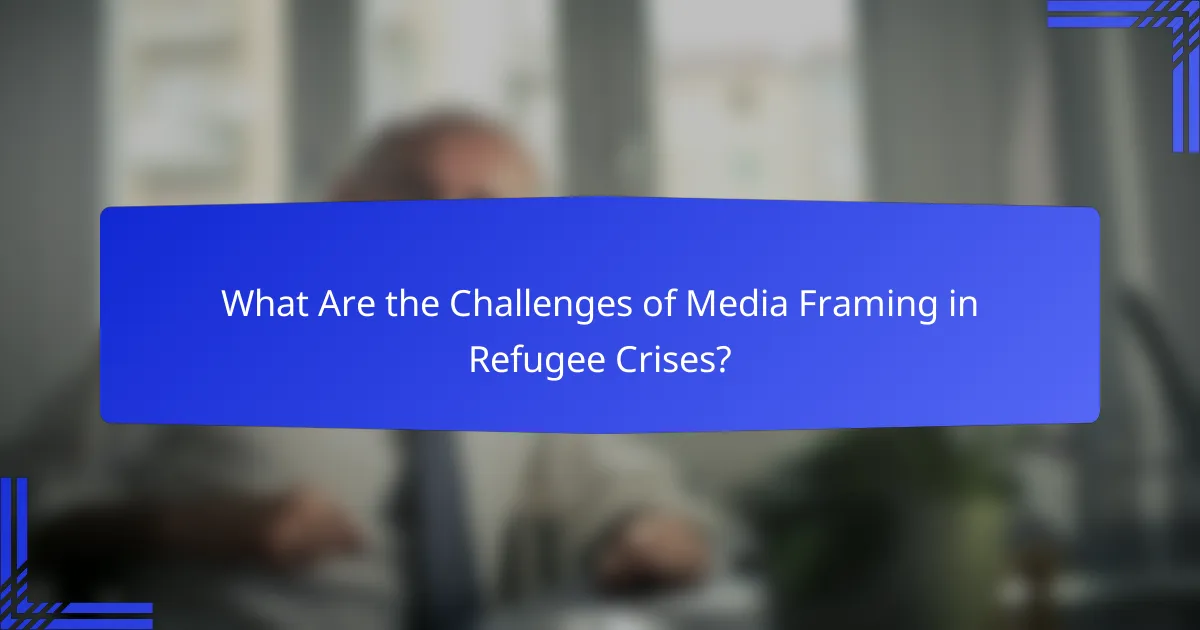
What Are the Challenges of Media Framing in Refugee Crises?
Media framing in refugee crises presents significant challenges that can shape public perception and influence policy. These challenges include bias and sensationalism, resource limitations, and public backlash, all of which can distort the narrative surrounding refugees and their needs.
Bias and sensationalism
Bias and sensationalism in media coverage can lead to skewed representations of refugees, often portraying them in a negative light. This framing can evoke fear or hostility among the public, rather than fostering empathy and understanding.
For example, headlines that emphasize crime or economic burden associated with refugees can overshadow their stories of resilience and contribution. Media outlets must strive for balanced reporting that highlights both challenges and successes to provide a more comprehensive view.
Resource limitations
Resource limitations often hinder the ability of media organizations to cover refugee crises thoroughly. Many outlets operate with tight budgets, leading to reliance on sensational stories that attract more viewers rather than in-depth analysis.
Additionally, journalists may lack access to reliable information or face restrictions in conflict zones, which can result in incomplete or misleading narratives. Collaborating with NGOs and utilizing diverse sources can help improve the quality of reporting.
Public backlash
Public backlash against refugees can be exacerbated by negative media framing, leading to increased hostility and discrimination. When media narratives focus on fear and crisis, they can incite public anger and resistance to refugee integration.
To mitigate backlash, media should emphasize positive stories of refugees contributing to society, such as their roles in local economies or community initiatives. Promoting understanding and compassion through storytelling can help shift public perception and reduce tensions.
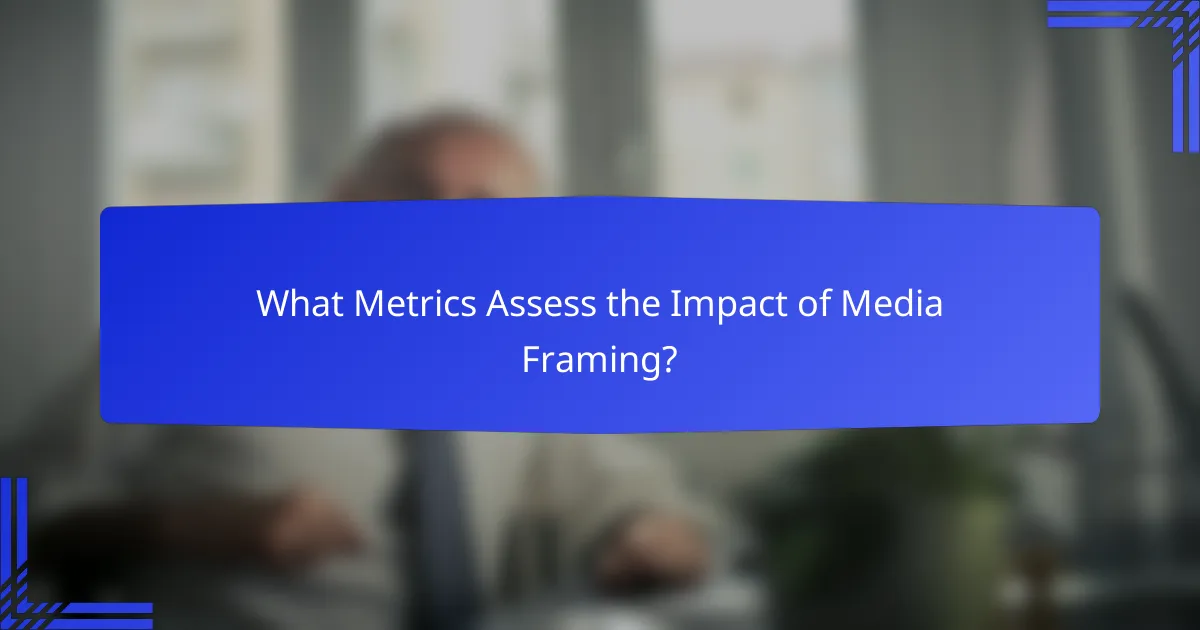
What Metrics Assess the Impact of Media Framing?
Metrics that assess the impact of media framing include public opinion surveys and engagement analytics. These tools help gauge how media narratives shape perceptions, attitudes, and behaviors regarding issues like refugee crises.
Public opinion surveys
Public opinion surveys are a primary method for measuring how media framing influences perceptions of refugee crises. These surveys typically ask respondents about their views on refugees, their rights, and the adequacy of government responses. By analyzing responses over time, researchers can identify shifts in public sentiment linked to specific media narratives.
When conducting surveys, consider factors such as sample size and demographic representation to ensure results are reliable. For instance, a well-designed survey might reveal that support for refugee assistance increases after positive media coverage, while negative framing can lead to decreased support.
Engagement analytics
Engagement analytics track how audiences interact with media content related to refugee issues. Metrics such as shares, comments, and likes on social media platforms provide insights into how framing affects public discourse. High engagement levels often indicate that the content resonates with audiences, potentially shaping their views.
To effectively use engagement analytics, focus on trends over time rather than isolated data points. For example, a spike in shares of a story highlighting refugee success stories may suggest a shift towards more positive framing, while a decline in engagement with negative stories could indicate audience fatigue or disagreement with the narrative. For more insights, visit this site.
